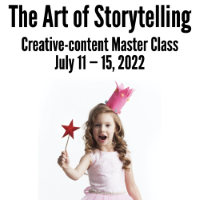Excuse me, are those your neurons flashing?
When you read this passage, can you feel your brain lighting up?

“He’ll hit us! We’d better climb this hillside — and fast!” Frank exclaimed, as the boys brought their motorcycles to a screeching halt and leaped off.
“On the double!” Joe cried out as they started up the steep embankment.
When you read these opening lines of The Tower Treasure, a Hardy Boys novel first published in 1927, different parts of your brain activate to supply different elements of the story:
Your brain lights up when reading stories.
- One group of neurons lights up to provide the story’s sense of space and movement (the careening car on a narrow road).
- Motor neurons flash when the characters clutch the grips or otherwise grasp objects.
- Neurons involved in eye movement activate when characters navigate their world.
- Yet another group of neurons ramps up when you read about the characters’ goals (climbing to safety).
Or so say Jeffrey Zacks and his team of psychologists at Washington University in St. Louis. They used a brain scanner to see which regions lit up as participants read different parts of a story.
“If you pick up a can of soda, your brain goes through a whole cascade of processes having to do with the motor commands to your arms,” Zacks says. “What it looks like to grab the soda can, what it feels like in your hand and arms. …
“And what we found is that as people are lying in the scanner reading about picking up a can of soda …, their brain processes differ in ways that are similar to the differences that we see in responses to real experiences.”
Reading? Or virtual reality?
Bottom line: Readers are far from passive consumers of stories. Indeed, when the story is vivid enough, our brains behave more like they’re acting than reading. That makes reading a dramatic narrative more like imagining a vivid event — or even remembering a real-life experience.
“When they’re reading the story, they’re building simulations in their head of events that are described by the story,” Zacks says. “And so, there’s an important sense that as they build that simulation that it’s significantly like being there.
“We’re used to thinking that virtual reality is something that involves fancy computers and helmets and gadgets. But … language itself is a powerful form of virtual reality.”
— Jeffrey Zacks, Washington University in St. Louis
“We’re used to thinking that virtual reality is something that involves fancy computers and helmets and gadgets. But what these kind of data suggest is that language itself is a powerful form of virtual reality, that there’s an important sense in which when we tell each other stories that we can control the perceptional processes that are happening in each other’s brains.”
No wonder readers understand vivid stories faster and remember them longer.
How can you tell better business stories?
Stories are so effective that Og Mandino, the late author of the bestselling The Greatest Salesman in the World, says, “If you have a point, find a story.”
 Learn to find, develop and write stories that engage readers’ hearts and minds at Master the Art of Storytelling, our business-storytelling workshop starting March 3.
Learn to find, develop and write stories that engage readers’ hearts and minds at Master the Art of Storytelling, our business-storytelling workshop starting March 3.
There, you’ll learn how to find the aha! moment that’s the gateway to every anecdote. How to start an anecdote with a bang — instead of a whimper. And how to use “the most powerful form of human communication” to grab attention, boost credibility, make messages more memorable and communicate better.
Save up to $100 with our group discounts.
